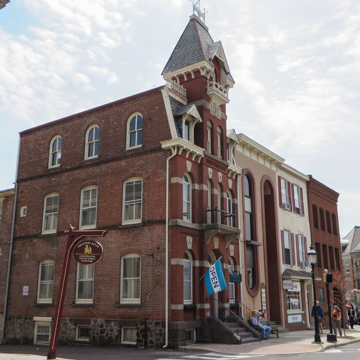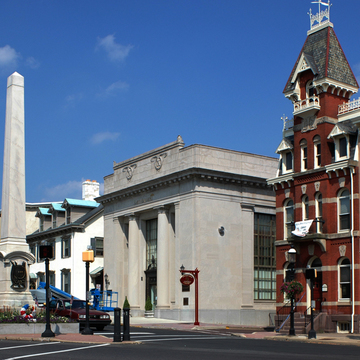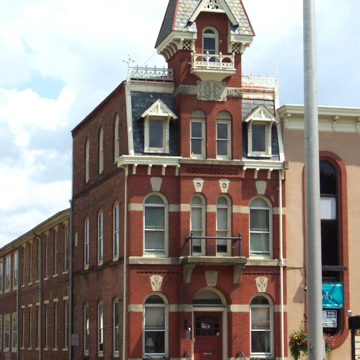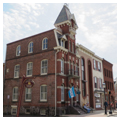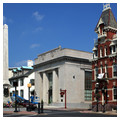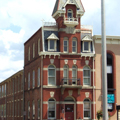At the base of the courthouse square, mediating between the government and retail zones, is a striking brick High Victorian shaft that housed the local newspaper office. The building takes the form of a slender front strongly decorated with yellow Ohio stone keystones and a plaque emblazoned “BCI,” the initials of the newspaper, framed by the founding date 1804 and the date of the building's completion in 1876 (two years after Thomas Cernea's death). The Bucks County Intelligencer was founded in 1804, even before the move of the county seat to Doylestown, and remains the principal newspaper, though its offices have now moved to the edge of the town. The facade with its crowning slate-roofed spire was certainly derived from Richard Morris Hunt's recently completed polychromed offices of the New York Tribune and reiterates the theme of the newspaper as a beacon of truth that continued in Raymond Hood's winning design for the Chicago Tribune Tower and later his design for the New York Daily News Building. The Intelligencer offices are strategically located adjacent to the courthouse and dominate the triangular intersection of Court and N. Main streets. In the center of the tiny triangle is the county's Civil War monument
You are here
Bucks County Intelligencer Building
1871–1876, Thomas Cernea. 10 E. Court St.
If SAH Archipedia has been useful to you, please consider supporting it.
SAH Archipedia tells the story of the United States through its buildings, landscapes, and cities. This freely available resource empowers the public with authoritative knowledge that deepens their understanding and appreciation of the built environment. But the Society of Architectural Historians, which created SAH Archipedia with University of Virginia Press, needs your support to maintain the high-caliber research, writing, photography, cartography, editing, design, and programming that make SAH Archipedia a trusted online resource available to all who value the history of place, heritage tourism, and learning.

